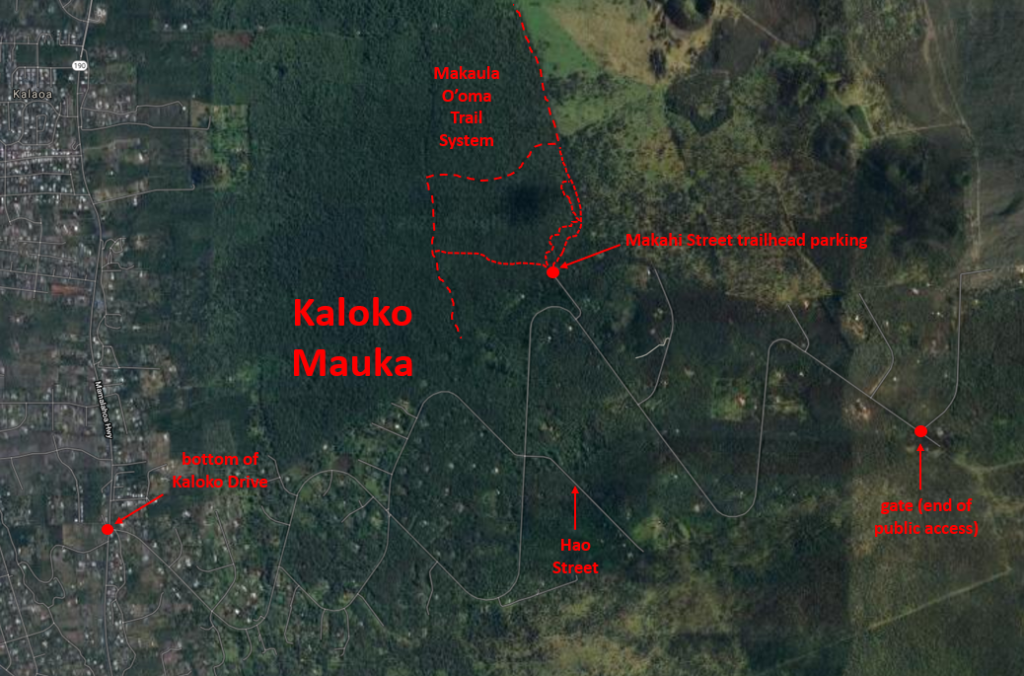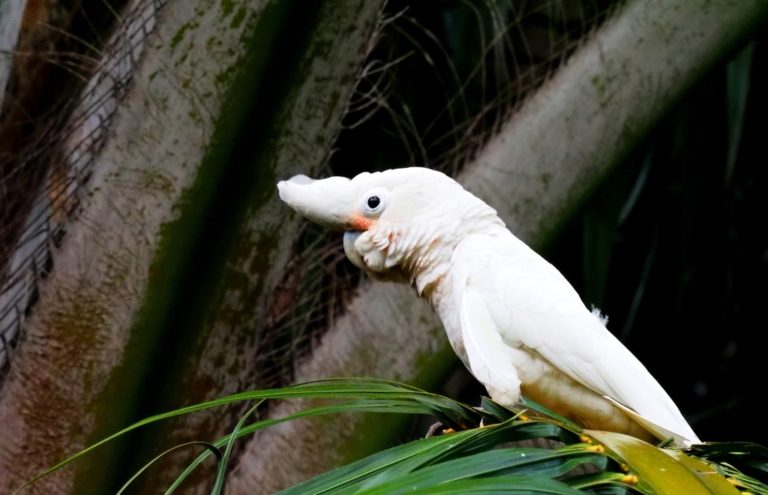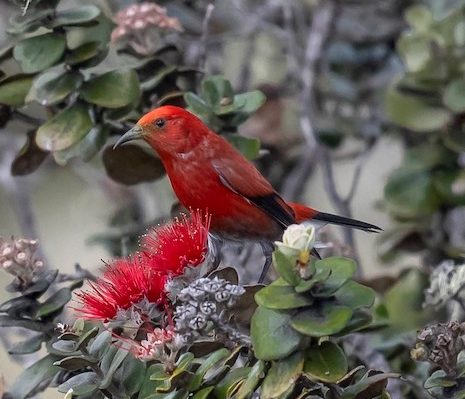Kaloko Mauka, Big Island, Hawaii

Most visitors to the dry Kona Coast are unaware that just a few miles away is a lush cloud forest. Parts of that forest are accessible along Kaloko Drive, which winds for seven miles up the dormant Hualalai volcano through the Kaloko Mauka (i.e., Kaloko Heights) subdivision, which was one of the last accessible sites for Hawaiian Crow. The endangered crows have vanished, but the area remains scenic and supports a mixture of introduced and native species, including Erckel’s Francolin, Kalij Pheasant, Hawaiian Hawk, Red-masked Parakeet, Tanimbar Corella, Hawaii Elepaio, Red-billed Leiothrix, Apapane, I’iwi, and Common Amakihi.
Orientation
Directions
Kaloko Mauka is a neighborhood on the western slope of Hualalai, about ten minutes’ drive (~5 miles) northeast of Kailua-Kona.
From Kona International Airport. Take Route 19 south for 1.2 miles, turn east on Kaiminani Drive, and go 3.6 miles to the T-junction with the Mamalahoa Highway (also part of the Hawaii Belt Road and Route 190). Turn north on Mamalahoa, go 0.8 miles, and turn right onto Kaloko Drive. It is approximately a seven-mile drive to the upper end.
Birdfinding
Kaloko Mauka is past its glory. Since soon after its development in the 1970s, it no longer supports populations of Hawaiian Crow, Hawaii Creeper, and Hawaii Akepa. But it still has a few birds that may be of interest to some visitors—and a potentially viable Hawaii Akepa population persists just a few miles away in the inaccessible Pu’u Wa’awa’a Forest Bird Sanctuary on the northern slopes of Hualalai, so there is at least a plausible hope that they will find their way back to Kaloko Mauka.
Makaula O’oma Trails. At about 3.8 miles, just after a hairpin turn from north to south, a short spur called Makahi Street curves back to the north. At the end of this is the entrance to the Makaua O’oma Tract of the Honua’ula Forest Reserve, where a network of trails leads into a partly intact forest with many tree ferns, ohia trees, and native palms.

Birds often seen along the trail include Kalij Pheasant, Hawaiian Hawk, Red-masked Parakeet, Warbling White-eye, Red-billed Leiothrix, Apapane, and Common Amakihi. Three additional native species, Hawaii Elepaio, Oma’o, and I’iwi, were formerly common but have become scarce.
Upper End. Kaloko Drive continues uphill for another three miles past Makahi Street, ascending to around 4,400’ elevation at the point where a gate blocks public access. There is very little traffic on the road, least of all at its upper end, and most if it is straight, so visibility is generally good. In addition to the birds mentioned above, Erckel’s Francolin and Wild Turkey are fairly frequent.

Tanimbar Corella with crest fully extended. © tanhk
Tanimbar Corella. In the 1980s several species of parrot were released in Kaloko Mauka. Among these, Red-masked Parakeet has become well-established over a wide area (perhaps due to other introductions), and most of the others have disappeared, but a localized flock of Tanimbar Corella may be growing, as there have been increasing sightings since the mid-2010s. A somewhat consistent spot is the uppermost junction of Kaloko Drive and Hao Street, which is a little less than a mile below Makahi Street.
Services
Accommodations
The Kailua-Kona area has no shortage of hotels. Both Kaloko Mauka and nearby subdivisions also have various B&Bs and other alternatives.
Notes
When to Visit
Mornings typically have clear skies. Mid-afternoon fog, mist, and rain are common.
Hazards & Hassles
The trailhead parking area on Makahi Street has a history of car break-ins.
Links
